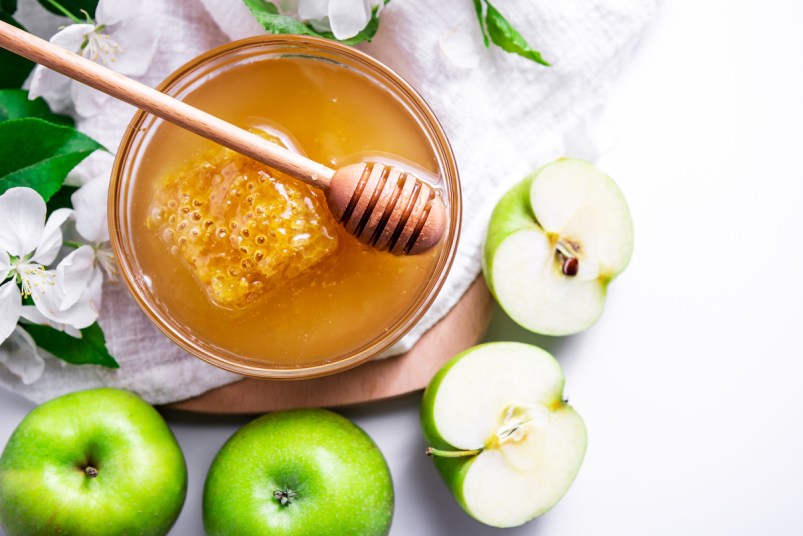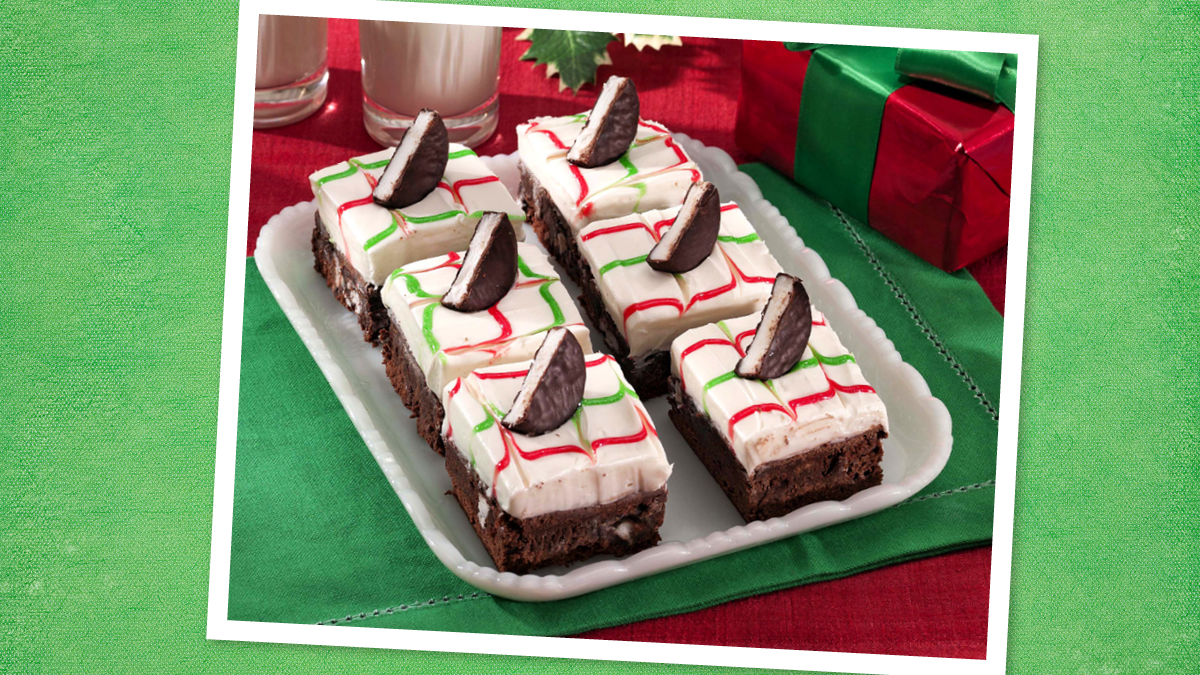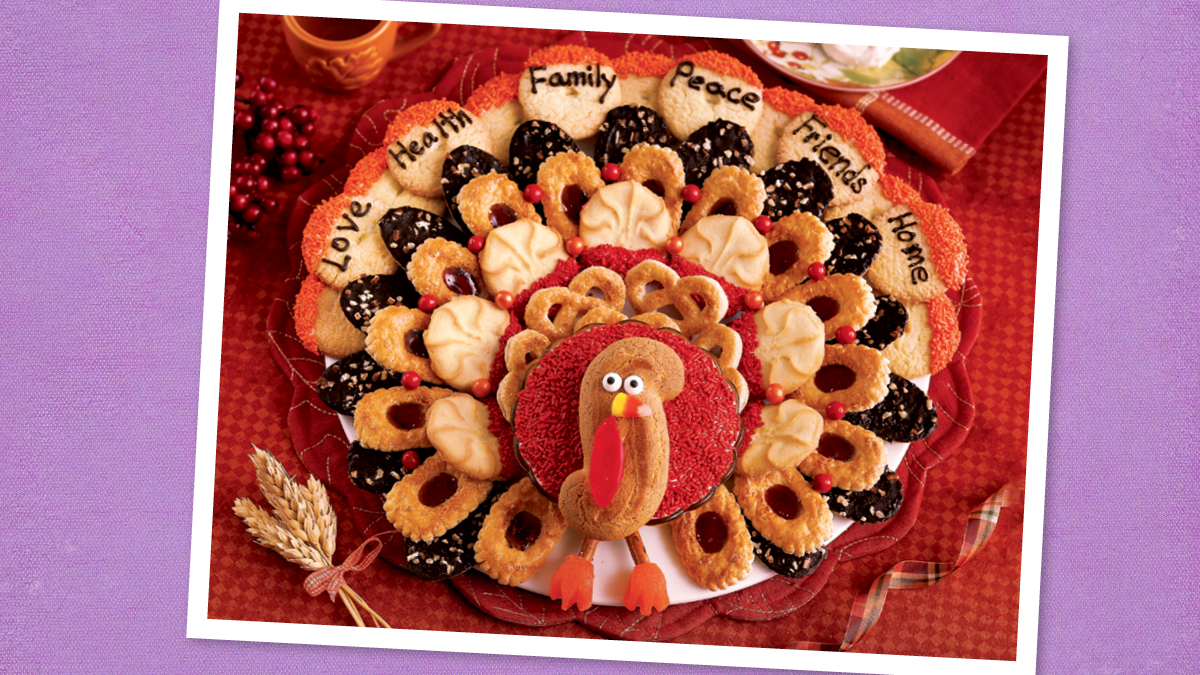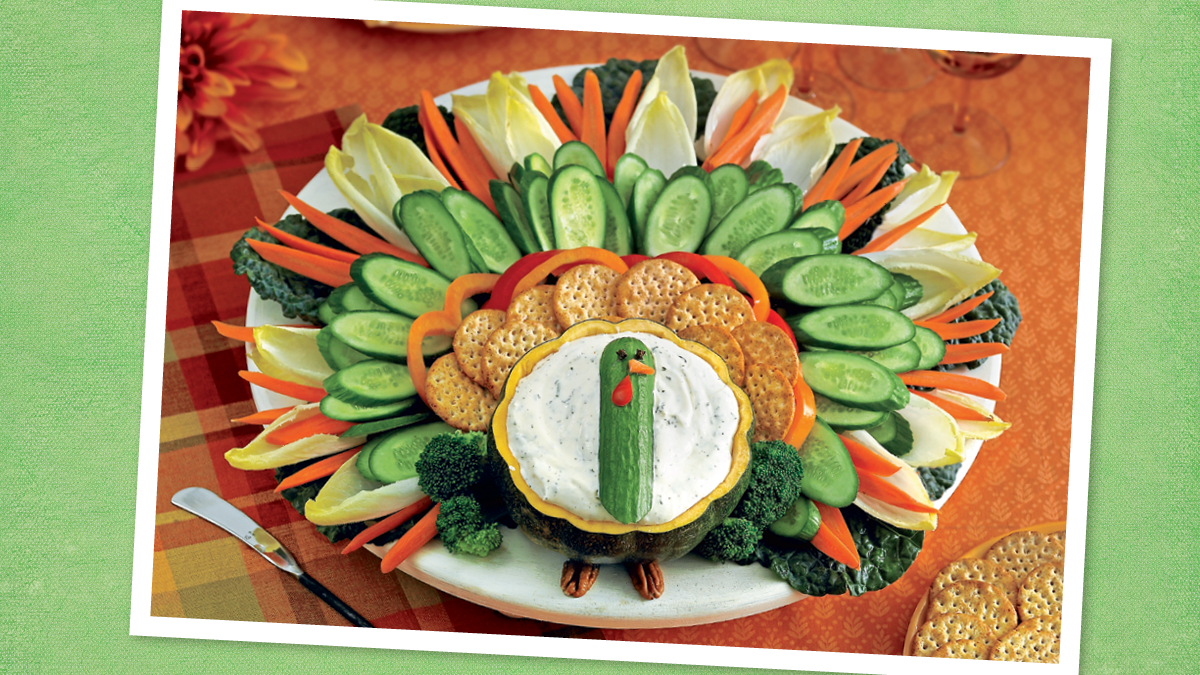What Apples and Honey Mean at the Jewish Table — and How Modern Rosh Hashanah Recipes Are Taking Them to New Heights
History and faith meet at the New Year's meal.

Every religion has its unique food traditions, from making pancakes to rid one’s kitchen of forbidden ingredients before Lent, to eating dumplings shaped like ancient currency to bring good fortune. Judaism is no different, and like Christianity, Taoism, and myriad other faiths, its culinary practices have cultural and spiritual significance.
Rosh Hashanah, the Jewish New Year that marks a time of reflection on the previous year and hope for the new one, begins this year on September 25 and runs through September 27. It is one of three “High Holidays” — Yom Kippur and Sukkot are the others — that are typically celebrated in late September and early October (depending on the Hebrew calendar). This Sunday and Monday, Jewish people throughout the world will gather for a deeply symbolic meal with family and friends.
Like almost all of the Jewish holidays, Rosh Hashanah features its own set of delectable delights. Deliciously chewy challah bread is typically found on the dinner table, as well as traditional foods like matzah ball soup, brisket, and the oft-maligned gefilte fish — think “fish meatloaf” if you’ve never tried it yourself. But the most potent and symbolic food in the annual Rosh Hashanah meal is probably the simplest: a plate of sliced apples served with honey for dipping.
What do apples and honey mean during Rosh Hashanah?
Dipping a crisp apple slice into honey symbolizes a sweet start to the new year. Rosh Hashanah is a time of both thoughtfulness and festivity, and the combination of apples and honey is (quite literally) a sweet way to welcome new beginnings with optimism. Apples and honey also taste distinctly like fall, which serves as a reminder of the fresh start that the season brings.
The presence of honey on the Rosh Hashanah dinner table has spiritual origins, too. It’s associated with the “honey wafer”-like manna (miraculously provided sustenance) described in the Jewish Torah (or Hebrew Bible). As a symbol of the divine’s ability to provide, manna signifies the struggles and triumphs of the biblical era and can inspire rich contemplation.
Honey has resonance in Christianity as well. The bee is the emblem of Christ’s forgiveness and justice (represented as the sweetness of a bee’s honey and the sharpness of a bee’s sting, respectively).
On top of that, honey is one of the oldest sweeteners — a natural substance that dates back to ancient times, and it serves as a reminder of the holiday’s roots.
What is the most traditional Rosh Hashanah recipe?
The most ubiquitous dish at most Jewish holiday tables is, without question, challah bread. This braided, subtly sweet bread is the culinary cornerstone of Jewish celebrations. At the Rosh Hashanah table, it appears as round challah. The circular shape symbolizes “our wish for a year in which life and blessings continue without end,” according to Rabbi Moshe Sofer. Sometimes, round raisin-filled challahs are on the table — yet another way of capturing the sweetness associated with the holiday.
Smitten Kitchen, a popular food blog devoted to “triumphant but unfussy cooking,” even has a recipe for a comforting apple and honey challah bread with the symbolic apples and honey baked right in.
Modern Rosh Hashanah Recipes with Apples and Honey
- On Trend Appetizer: Apple and Honey Avocado Toast. If you’re looking for a simple small plate — whether to serve at your Rosh Hashanah table or to learn about the food traditions of another faith — this modern apples and honey recipe is just the ticket (and it comes courtesy of the amusingly named blog ‘What Jew Wanna Eat’). Avocado toast was the preferred snack of millennials circa 2017 thanks mostly to its healthfulness and photogenic, social-media friendly appearance. Topping it with apples and honey makes for a playful fusion of ancient and modern tastes.
- Easy Cleanup Entrée: Apple and Honey Chicken. Apples and honey aren’t limited to a simple snack. They can (and should) be incorporated into entrées. This one-pan recipe — bonus points for quick cleanup — comes from Jewish news site Forward.com.
- Sweet Desserts: Upside-Down Cake, Bread Pudding, Honey-Glazed Apple Pie. The natural sweetness of the apple-meets-honey combo lends itself to dessert, which is why we’ve suggested three variations here. Honestly, you could probably prepare an entire Rosh Hashanah meal with nothing but apple and honey dishes on the table, start to finish.
- “Start Your Day” Dish: Apple and Honey Granola (recipe below). This recipe from Leah Koenig’s cookbook Modern Jewish Cooking: Recipes & Customs for Today’s Kitchen (Buy from Amazon, $17.59) tastes just as delicious with a scoop of ice cream post-Rosh Hashanah dinner as it does with yogurt or milk for breakfast the next morning. Learn how to make it by following the steps below.
Ingredients (Makes about 7 cups):
- ⅓ cup honey
- ⅓ cup vegetable oil
- 2 tablespoons light brown sugar
- 2 teaspoons cinnamon
- 1 teaspoon ginger powder
- ½ teaspoon salt
- 2 ½ cups old-fashioned rolled oats
- 1 cup walnuts, roughly chopped
- ½ cup roasted, unsalted almonds, roughly chopped
- 1 cup chopped dried apple
- ½ cup golden raisins
Instructions:
- Preheat oven to 375 degrees Fahrenheit and line a large, rimmed baking sheet with parchment paper.
- In small bowl, whisk together honey, vegetable oil, brown sugar, cinnamon, ginger, and salt; set aside.
- In large bowl, combine oats, walnuts, and almonds. Drizzle with honey mixture and stir until completely coated.
- Spread mixture on prepared baking sheet and bake, stirring occasionally, until fragrant and deep golden brown, 20–25 minutes. (The mixture will look wet; it will crisp up as it cools.) Remove baking sheet from oven, add dried apple and golden raisins, and stir to combine; set sheet on wire rack to cool completely.
- Serve with ice cream, yogurt, or milk.
Whether you celebrate Rosh Hashanah or are looking to expand your palate (and satisfy your curiosity), the idea of new beginnings is a powerful one. There are so many ways to combine apples and honey, and no matter how you’re enjoying this autumnal flavor combo, things are sure to be cozy and sweet in every sense.












